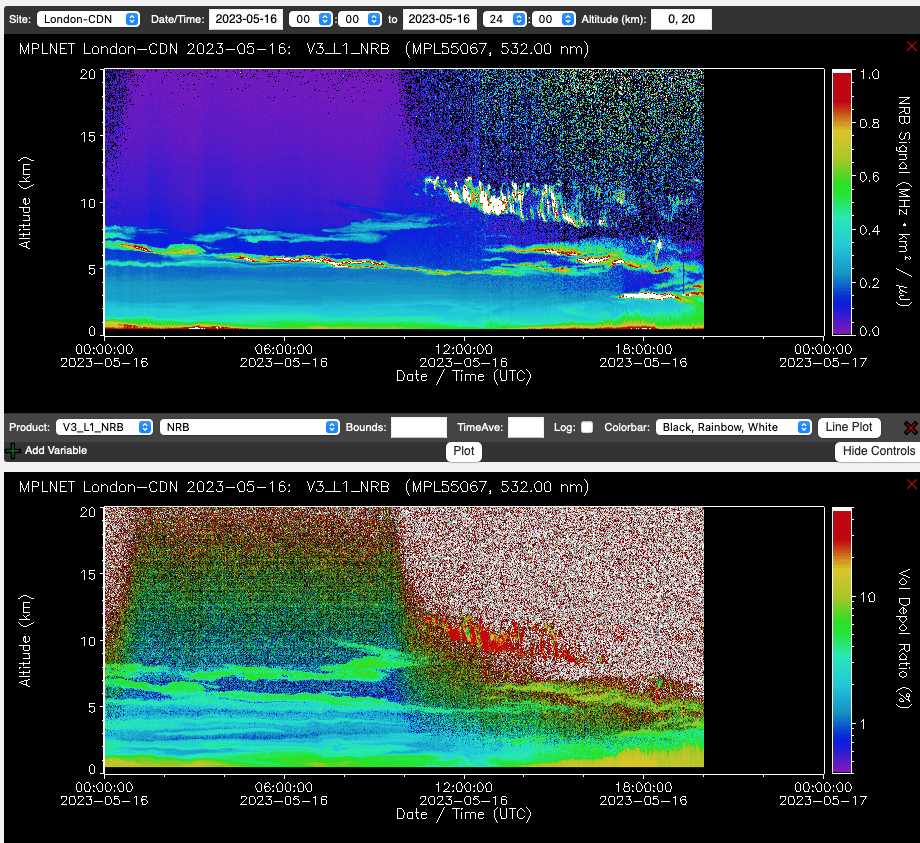Robert Sica, Professor

Contact Information
Office: PAB 256
Tel: (519) 661-2111 x83521
E-mail: sica@uwo.ca
ORCID
MPLCAN
MPLNET
Purple Crow Lidar
Research Areas
Atmospheric Physics
Research Interests
My research expertise is measurements of atmospheric dynamics and thermodynamics in Earth’s atmosphere. My current research effort is establishing the Canadian Micro-Pulse Lidar Network, MPLCAN. We have established 5 MPLCAN nodes in London, Toronto, Sherbrooke, Sandy Cove (Halifax) and in the High Arctic, Eureka, NU with 2 more Arctic nodes to be installed in Summer/Fall 2023. My research expertise is measurements of atmospheric dynamics and thermodynamics in Earth’s atmosphere. My current research effort is establishing the Canadian Micro-Pulse Lidar Network, MPLCAN to improve our ability to track and characterize forest fire smoke, pollutants, and volcanic ash, all of which are of great importance for the health and safety of Canadians. For example, in Summer 2017, British Columbia experienced its worst forest fire season on record. Already in Spring 2023 we are seeing a bad fire season beginning in Alberta and British Columbia. Firefighting and evacuation efforts would be improved by an ability to track the smoke from the fires in real time. Fire smoke and pollutants can travel great distances; for some large fires in the West smoke is measured over London within 2 days (see picture below), and for larger fires is transported over Europe. The “pristine” Arctic also gets particulates transported from the South. Bottom line: local fires cause both devastating local and global health and economic impacts.
To improve our understanding of the transport of particulates, as well as studying the impact of these particulates on interpreting ozone trends and their role in the formation of fog and clouds, we have established 5 nodes in the new Canadian Micro-Pulse Lidar Network (MPLCAN) at London, Toronto, Sherbrooke, Halifax, and in the High Arctic (Eureka, NU). Two more Arctic nodes will come online in Summer/Fall 2023. These instruments are part of the global NASA Micro-pulse Lidar Network (London site). The micro-pulse lidars (MPLs) will allow the structure of the atmosphere to be profiled in both height and time, for both the amount and type of particulates present, in addition to allowing liquid water to be discriminated from ice in developing clouds, precipitation, and fog. We also measure layers of smoke particles in the upper troposphere and stratosphere (> 10 km altitude) associated with distant forest fires, injected into the stratosphere via a process called pyroconvection. The smoke particles can travel great distances, and affect both ozone concentration and temperature. With the number and severity of forest fires increasing, forest fires play a more complex role in global warming than anticipated, and we are trying to understand these effects.
Forest fire smoke over London from the Spring 2023 fires in Alberta and British Columbia. The top figure shows the scattering of the laser beam by smoke and cloud. The lower figure shows the degree of polarization of the backscattered light; smoke is green, ice clouds red.
We actively collaborate nationally and internationally on projects involving atmospheric dynamics (in particular gravity waves), composition (including water vapour and ozone), and aerosols. We work with lidar systems in the high Canadian Arctic at the Polar Environment Atmospheric Research Laboratory. We also have close ties with the Swiss Meteorological service and work with them developing innovative new ways to analyze lidar measurements. Some of my students visit these locations for research and to make measurements. Maybe you want to join them!
Publications
- Farhani, G., Sica, R.J., Daley, M.J. “Classification of lidar measurements using supervised and unsupervised machine learning methods” (2021) Atmospheric Measurement Techniques, 14 (1), pp. 391-402. DOI:10.5194/amt-14-391-2021
- Hicks-Jalali, S., J. Sica, R., Martucci, G., Maillard Barras, E., Voirin, J., Haefele, A. “A Raman lidar tropospheric water vapour climatology and height-resolved trend analysis over Payerne, Switzerland” (2020) Atmospheric Chemistry and Physics, 20 (16), pp. 9619-9640. DOI:10.5194/acp-20-9619-2020
- Gamage, S.M., Sica, R.J., Martucci, G., Haefele, A. “A 1D var retrieval of relative humidity using the era5 dataset for the assimilation of Raman lidar measurements” (2020) Journal of Atmospheric and Oceanic Technology, 37 (11), pp. 2051-2064. DOI:10.1175/JTECH-D-19-0170.1
- Mahagammulla Gamage, S., Sica, R.J., Martucci, G., Haefele, A. “Retrieval of temperature from a multiple channel pure rotational Raman backscatter lidar using an optimal estimation method” (2019) Atmospheric Measurement Techniques, 12 (11), pp. 5801-5816. DOI:10.5194/amt-12-5801-2019
Teaching
Undergraduate:
Physics 4700: Introduction to Atmospheric Physics
Graduate:
Physics 9720: Atmospheric Physics
Awards
- Faculty of Science Distinguished Research Professor (2023-2024)
- The University of Western Ontario's Florence Bucke Science Prize (2003)
- Editor's Citation for Excellence in Refereeing for Geophysical Research Letters (American Geophysical Union) (1995)
Professional Activities
- Associate Editor, Atmospheric Measurement Techniques
- Member, Network for Detection of Atmospheric and Climate Change (NDACC) Lidar Working Group
- Principle Investigator, Canadian Micro-Pulse Lidar Network (MPLCAN)
- Visiting Scientist, MeteoSwiss, Payerne, Switzerland


